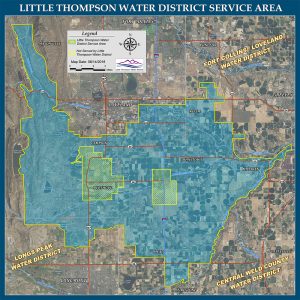You’re interested in building your own home in Colorado, and somebody says you have to pay for a water tap. What is it? What does it mean? What does it include?
Lets back up and talk about water first. In the US, the average amount of rainfall is about 40 inches annually. The front range gets about 17 inches. Or 56% less than the national average. As you can see, Colorado has a rainfall/water problem (1). Then you compound that by the fact that Colorado added over 100,000 new residents in 2016, and are projected to do the same in 2017 making it the second fastest growing state in the union, you can see how water in Colorado is a precious commodity(2).
Fast forward to wanting to build your home in a rural area along the front range. There are rural water districts that supply water up and down the front range depending on your location. The main districts we build in include:
Little Thompson Water District
5/8 Tap cost: $34,700
North of Longmont
Central Weld Water District
5/8 Tap cost: $26,000
North East of Longmont
central-weld-water-district-map
Longs Peak Water District
5/8 Tap cost: $53,000
Just outside the city of Longmont
Left Hand Creek Water District
5/8 Tap cost: $57,000
South of Longmont
I’ve listed the 2016 cost for the 5/8 tap, which is the general size for residential construction. The tap costs vary widely. This price is normally an additional expense to building your own home in a rural area. You must pay that amount to receive approval to tap into the district water supply. (Water tap fees are subject to changing, always check with the district)
After tapping into the water district supply, you then pay a monthly fee for the amount of water you use.
What does the water tap fee cover?
You might be wondering, why do I have to pay money just to have access to water that I will pay for anyway. Well your water tap fee essentially purchases “water rights”. With such limited supply of water, Colorado for decades has traded in water rights. That means the water that falls on the ground or flows down the rivers or ditches, is owned by someone who has purchased the “right”. When you buy a water tap, you are purchasing “rights” to “raw” water, that you then pay monthly for the water district to treat and purify before receiving it through the infrastructure to your house.
The fee that you pay covers the cost for the water district to claim water on your behalf. It pays for your raw water rights. It also pays for investment in facilities to treat your water. And it covers the cost to the district of installing your service line, meter and meter pit.
Why not just dig a well?
Simply put, usually you cannot. Digging a well requires a permit. When you want to build within a water district where a water line is available, getting approved for a well is very difficult.
2. (http://www.denverpost.com/2015/12/22/colorados-population-jumped-by-101000-in-12-months-2/)

prednisone
Pour les cures courtes de moins de 10 jours, l’arrГЄt du traitement ne nГ©cessite pas de dГ©croissance. https://fr.ulule.com/acheter-prednisone/ Lors de la dГ©croissance des doses (cure prolongГ©e): Г la posologie de 5 Г 7 mg d’Г©quivalent prednisone, lorsque la maladie causale ne nГ©cessite plus de corticothГ©rapie, il est souhaitable de remplacer le corticoГЇde de synthГЁse par 20 mg/jour d’hydrocortisone jusqu’Г la reprise de la fonction corticotrope.